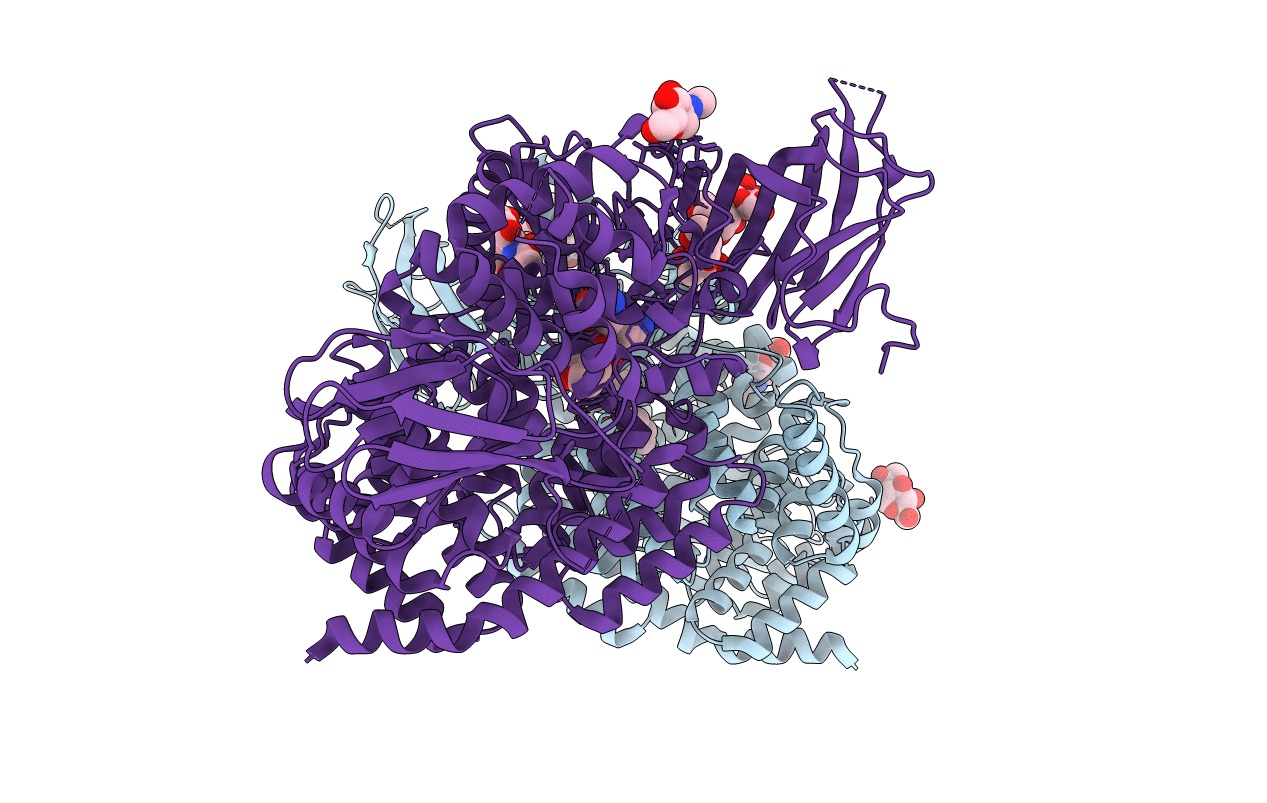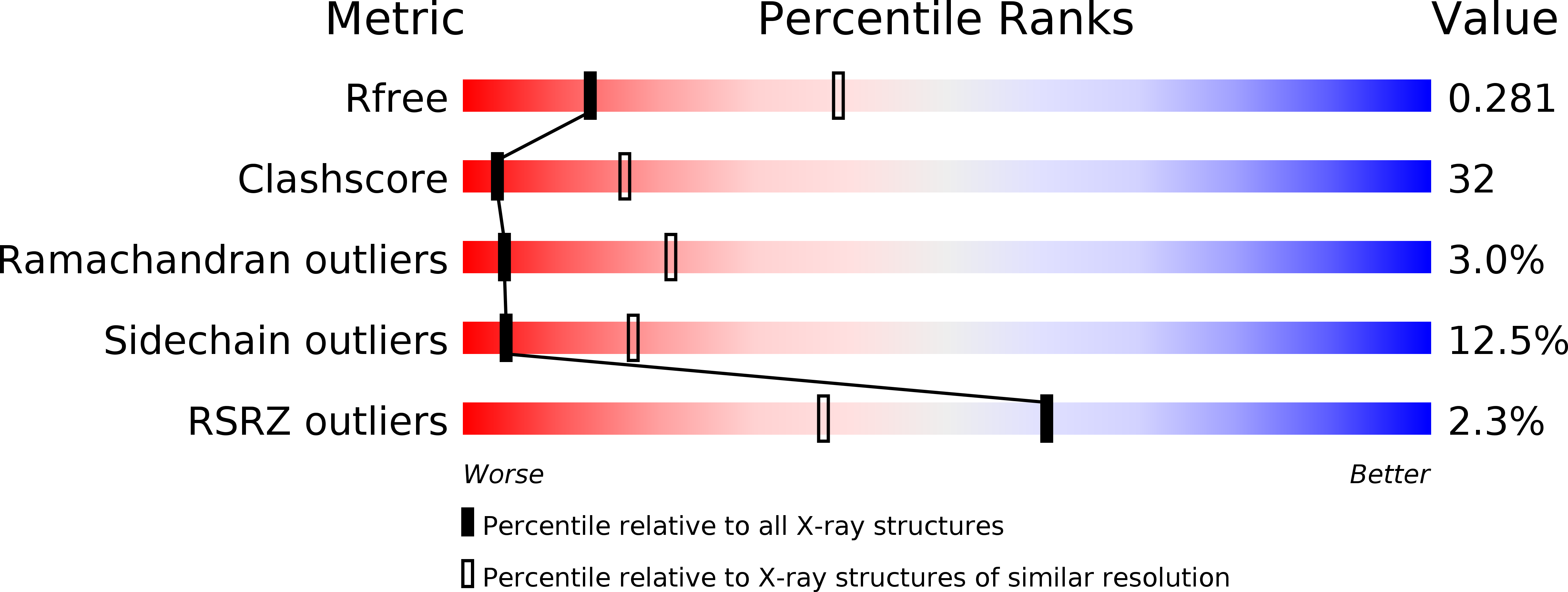
Deposition Date
2011-06-10
Release Date
2011-12-21
Last Version Date
2024-11-20
Entry Detail
PDB ID:
3SE6
Keywords:
Title:
Crystal structure of the human Endoplasmic Reticulum Aminopeptidase 2
Biological Source:
Source Organism:
Homo sapiens (Taxon ID: 9606)
Host Organism:
Method Details:
Experimental Method:
Resolution:
3.08 Å
R-Value Free:
0.27
R-Value Work:
0.21
R-Value Observed:
0.21
Space Group:
P 1 21 1


